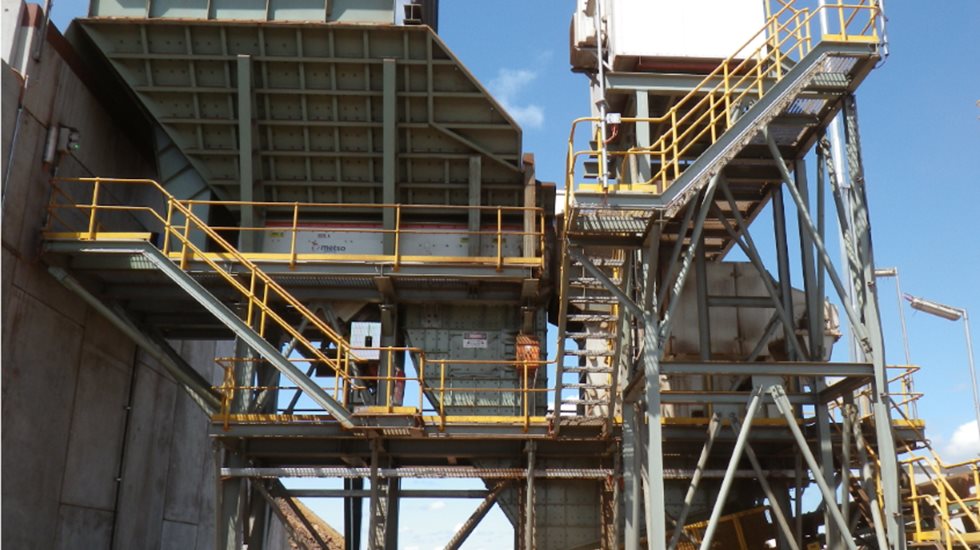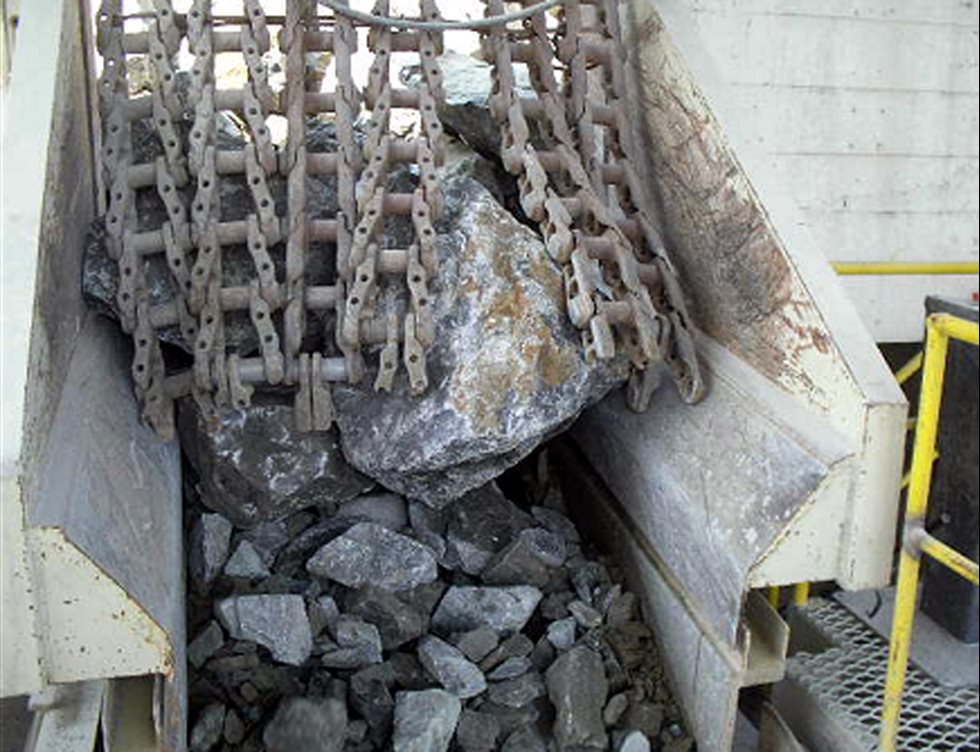The feeder is the first vibrating equipment seeing the large rock fragments coming from the pit. What is important to keep in mind when designing this primary stage?
The main function of the primary vibrating feeder is to absorb the impact and deliver a controlled feed to the primary crusher. It is crucial to always keep a remaining material layer on the vibrating pan in order to absorb the impacts, protect the feeder structure, and increase the wear life.
Another important tip for protecting the primary crusher during material unloading is the design of the feeder bin. It has to be high enough to avoid leakage of material at the feeder discharge end. Another solution to consider is to install a preliminary chute before the feeder hopper to increase the distance from the discharge point to the end of its vibrating pan.
Some stones coming from this leakage can "fly over" and impact against the primary crusher at high speed, causing damage. The installation of chains, tires or other similar solutions between the feeder and the crusher can minimize this problem by slowing down the rocks unloaded by trucks.


